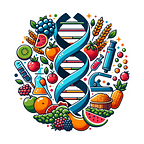Unlocking the Power of Water-Soluble Vitamins
Water-soluble vitamins play a critical role in many vital functions in our bodies. From energy extraction from our food to cellular signalling, DNA synthesis, and the conduction of nerve impulses, these vitamins are the unsung heroes of our metabolic processes.
The Essential Nine
We focus on nine compounds: the B vitamins (B1, B2, B6, B12), niacin, folate, biotin, pantothenic acid and vitamin C. Each of these stands out for its unique chemical composition and function.
Vitamin B1: Thiamine
Thiamine acts as a coenzyme in numerous metabolic reactions, particularly in carbohydrate and alcohol metabolism, and is crucial for nerve transmission. It’s found in nearly all foods, whether of animal or plant origin, with primary sources being nutritional yeast, wheat germ, pork, kidneys, whole meal bread, and legumes.
Vitamin B2: Riboflavin
Riboflavin plays a part in the body’s redox reactions. Key sources include nutritional yeast, offal, cheese, eggs, milk, and dairy products.
Vitamin B3: Niacin
Niacin is involved in all redox reactions within the body and is essential for energy production for the metabolism of proteins, fats, and carbohydrates. Its presence spans most foods but mainly concentrates on meats, fish, cereals, and mushrooms.
Vitamin B5: Pantothenic Acid
As a component of coenzyme, A, pantothenic acid is vital for numerous reactions in the body. It benefits mucous membranes, skin, and hair and aids in healing. It’s found in various animal and plant foods, especially meats, fish, eggs, and dairy products.
Vitamin B6: Pyridoxine
Pyridoxine is known for supporting the nervous system, participating in oxalic acid metabolism to reduce kidney stone risk, and releasing glucose from storage organs. Like its fellow B vitamins, it is present in many foods, with yeast and wheat germ being wealthy sources. In everyday diets, the primary sources are meats, fish, and liver.
Vitamin B7: Biotin
Biotin is involved in fatty acid synthesis and maintains healthy skin and hair. While trace amounts are found in most foods, liver, kidneys, and egg yolks are the richest sources.
Vitamin B9: Folate (folic Acid)
Folic acid is crucial in forming red blood cells and preventing defects in the neural tube. It also plays a role in the metabolism of specific amino acids. Abundantly present in plant leaves and also in dry yeast and liver.
Vitamin B12: Cobalamin
Cobalamin is critical for blood coagulation and DNA/RNA synthesis. It’s exclusively found in animal products like liver, egg yolk, meats, fish, shellfish, milk, and dairy products.
Vitamin C: Ascorbic Acid
A potent antioxidant, vitamin C neutralizes free radicals, aids in iron metabolism, boosts anti-infective immunological responses, and is integral to collagen and elastin synthesis. Fruits and vegetables constitute 70% of the daily vitamin C intake.
The Danger of Deficiency
The human diet must regularly include these vitamins in small amounts, as any excess is not stored but expelled through the kidneys. Deficiencies can lead to diseases like scurvy from a lack of vitamin C or anemia and spinal cord degeneration from a lack of vitamin B12.
A Historical Perspective
Some reference past experiments, now considered unethical, where volunteers were deprived of vitamin C to establish the necessary amount to prevent scurvy. Such research underpins the nutritional reference values for water-soluble vitamins. A varied diet encompassing fruits, vegetables, cereals, meat, fish, and dairy generally meets individual vitamin needs, safeguarding against deficiencies.
A tapestry of foods is not just a feast for the senses but a foundational requirement for a healthy, vibrant life.
